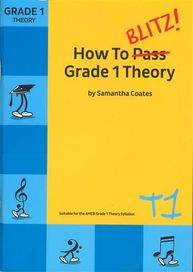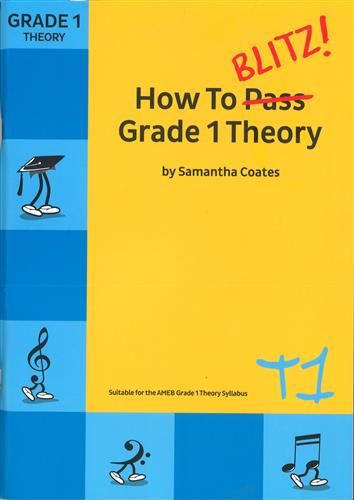- Home /
- SHEET MUSIC /
- Theory /
- Blitz /
- Grade 1 How to Blitz Theory
Shop Now
- ALL NEW LINES
- AMPLIFIERS
- BRASS INSTRUMENTS
- CABLES & LEADS
- CASES & BAGS
- DJ Equipment
- DRUM
- EFFECTS
- FOLK INSTRUMENTS
- GIFT VOUCHER
- GIFTS & CLOTHING
- GUITAR
- GUITAR & FOLK ACCESSORIES
- HOME RECORDING
- KEYBOARD
- LIVE SOUND
- MICROPHONES
- ORCHESTRAL
-
PERCUSSION
- Bells
- Bongos
- Boomwhackers
- Cabasas
- Cajon
- Castanets
- Claves
- Didgeridoos
- Djembe
- Egg Shakers
- Finger Cymbals
- Glockenspiels
- Guiros
- Handpans
- Jumbie Jams
- Kalimba
- Maracas and Shakers
- Ocean Drums
- Percussion Sets
- Ratchets
- Slap Sticks
- Tambourines and Tambours
- Tone Blocks
- Tongue Drum
- Triangles
- Waist Drums
- Wood Blocks
- PIANO
- REEDS
-
SHEET MUSIC
- Alto Saxophone
- Aural Piano and other Instrume
- Australian Music
- Band and Orchestral Methods
- Banjo Methods
- Bass Guitar Methods
- Bongo Methods
- Broadway Movies and Shows
- Childrens Songbooks
- Chords and Scales
- Christmas Music
- Clarinet
- Classical Piano
- Country
- Djembe Methods
- Drum Methods
- Easy Guitar
- Easy Piano
- Exam Brass and Wind
- Exam Piano
- Exam Strings
- Exam Vocal
- EZY Play
- Flute
- Guitar
- Guitar Methods
- Harmonica Methods
- Jazz and Blues Piano
- Keyboard
- Keyboard Methods
- Mandolin Methods
- Manuscript
- Pedal Steel Methods
- Piano Duets
- Piano Methods
- Piano Solo
- PVG Piano Vocal Guitar
- Recorder Methods
- Sight Reading Piano
- Singing
- TAB Guitar
- Teaching Aids
- Theory
- Tin Whistle Methods
- Trumpet
- Ukulele
- Ukulele Methods
- Violin Viola Cello Double Bas
- Violin Viola Cello Double Bass
- Weddings and Special Occasions
- STANDS & LIGHTS
- STRINGS
- SUNDRY INSTRUMENTS
- TUNING DEVICES
- WOODWIND
Grade 1 How to Blitz Theory
Description
How to Blitz Grade 1 Theory
by Samantha Coates
T1
How to Blitz Theory Grade 1 contains more information, more revision and more worksheets than any other theory text book.
One of the best features is the clearest and easiest section on music notation ever written. It assumes you have never actually see music before. If you already know how to read music, you will find this section super easy. Whizz through it and impress all your friends.
Although music theory applies to all instruments, not just piano, it is the piano keyboard that is most helpful in demonstrating certain things you need to learn suchas semitones and accidentals. The reason for this is that the piano keyboard is a visual pattern. If you are learning to play an instrumentother than a piano, you will find plenty of piano keyboard diagrams in the book to help you understand some concepts more easily.



